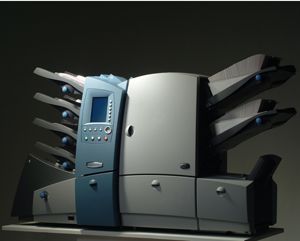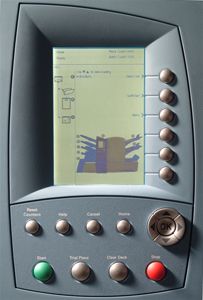



DI500/DI600 Tabletop Inserter
Mail production machine
This new mail production equipment incorporates the same user interface paradigm of the DI900/DI950. Users are prompted to build a mail piece, creating a graphic representation of its various components envelopes, sheets, and inserts. Guided instructions tell the user where to load the various materials and the proper orientation. Whereas the DI900/DI950 have been developed from a clean sheet of paper, the DI500/DI600 had the ambitious design goal of 60-70% reuse of existing technology. The architecture of this machine has been expanded, enabling more feeder stations of greater capacity, while maintaining a compact footprint. Essentially, the DI500/DI600 realizes the design objectives: facilitating expanded functionality, simplifying user interaction, reducing product size, while providing enhanced aesthetic appeal.